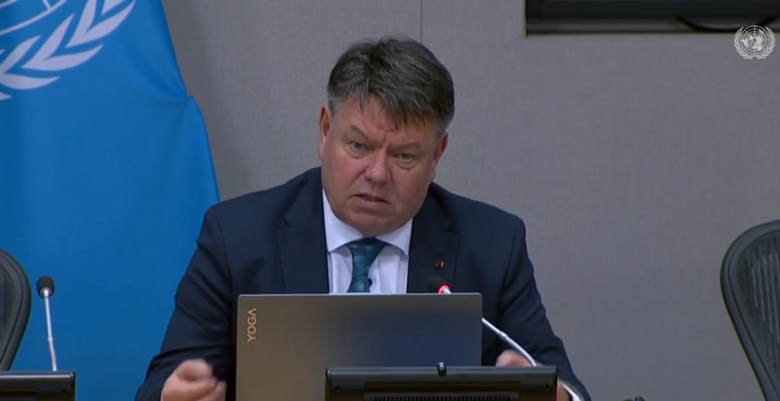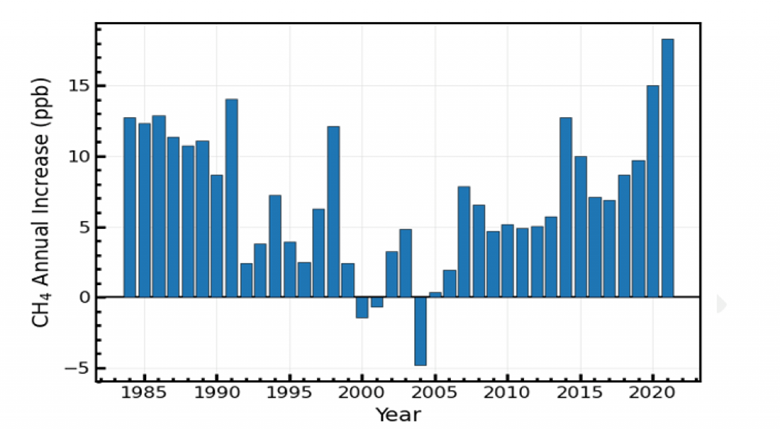Description

Disclaimer: Copyright infringement not intended.
Context: Atmospheric levels of all three greenhouse gases — carbon dioxide, methane and nitrous oxide — reached an all-time high in 2021, according to a United Nations agency. Scientists from the World Meteorological Organization said that the continuing rise in concentrations of the heat-trapping gases means “we are heading in the wrong direction.”

Details:
- The increase in CO2 levels from 2020 to 2021 was higher than the average annual growth rate over the last decade.
- The biggest year-on-year jump in methane concentrations was also seen in 2021 since systematic measurements began nearly 40 years ago, said the Greenhouse Gas Bulletinby the WMO.
- These levels continued to rise in 2022 over the globe, showed measurements from WMO’s Global Atmosphere Watch network stations.
- Radiative forcing — the warming effect on our climate— by long-lived GHG jumped nearly 50 per cent from 1990 levels; CO2 accounted for about 80 per cent of this increase.
- CO2 concentrations in 2021 were 415.7 parts per million (ppm), methane at 1,908 parts per billion (ppb) and nitrous oxide at 334.5 ppb.

- The increase in CO2 levels is primarily because of emissions from the combustion of fossil fuels and cement production. Global emissions have rebounded since the COVID-related lockdowns in 2020, the report found.
- There is concern that the ability of land ecosystems and oceans to act as “sinks” may become less effective in future, thus reducing their ability to absorb CO2 and act as a buffer against larger temperature increases. In some parts of the world, the transition of the land sink into CO2 sources is already happening.
- Analysis indicates that the largest contribution to the renewed increase in methane since 2007 comes from biogenic sources, such as wetlands or rice paddies.
- The dramatic increase might also be because of natural interannual variability. The years 2020 and 2021 saw La Niña events, which are associated with increased precipitation in the tropics.
- The increase in nitrous oxide levels from 2020 to 2021 was slightly higher than that observed from 2019 to 2020 and higher than the average annual growth rate over the past 10 years, the report showed.
- Slashing CO2 emissions — the biggest driver of climate changeand associated extreme weather — should be the priority. Methane has a relatively short lifetime of fewer than 10 years and so its impact on climate is reversible
World Meteorological Organization (WMO):
- The World Meteorological Organization (WMO) is an intergovernmental organization with a membership of 192 Member States and Territories.
- It originated from the International Meteorological Organization (IMO), which was established after the 1873 Vienna International Meteorological Congress.
- Established by the ratification of the WMO Convention on 23 March 1950, WMO became the specialized agency of the United Nations for meteorology (weather and climate), operational hydrology and related geophysical sciences.'
- WMO is headquartered in Geneva, Switzerland.
https://www.downtoearth.org.in/news/climate-change/record-greenhouse-gas-emissions-time-running-out-warns-un-85637















